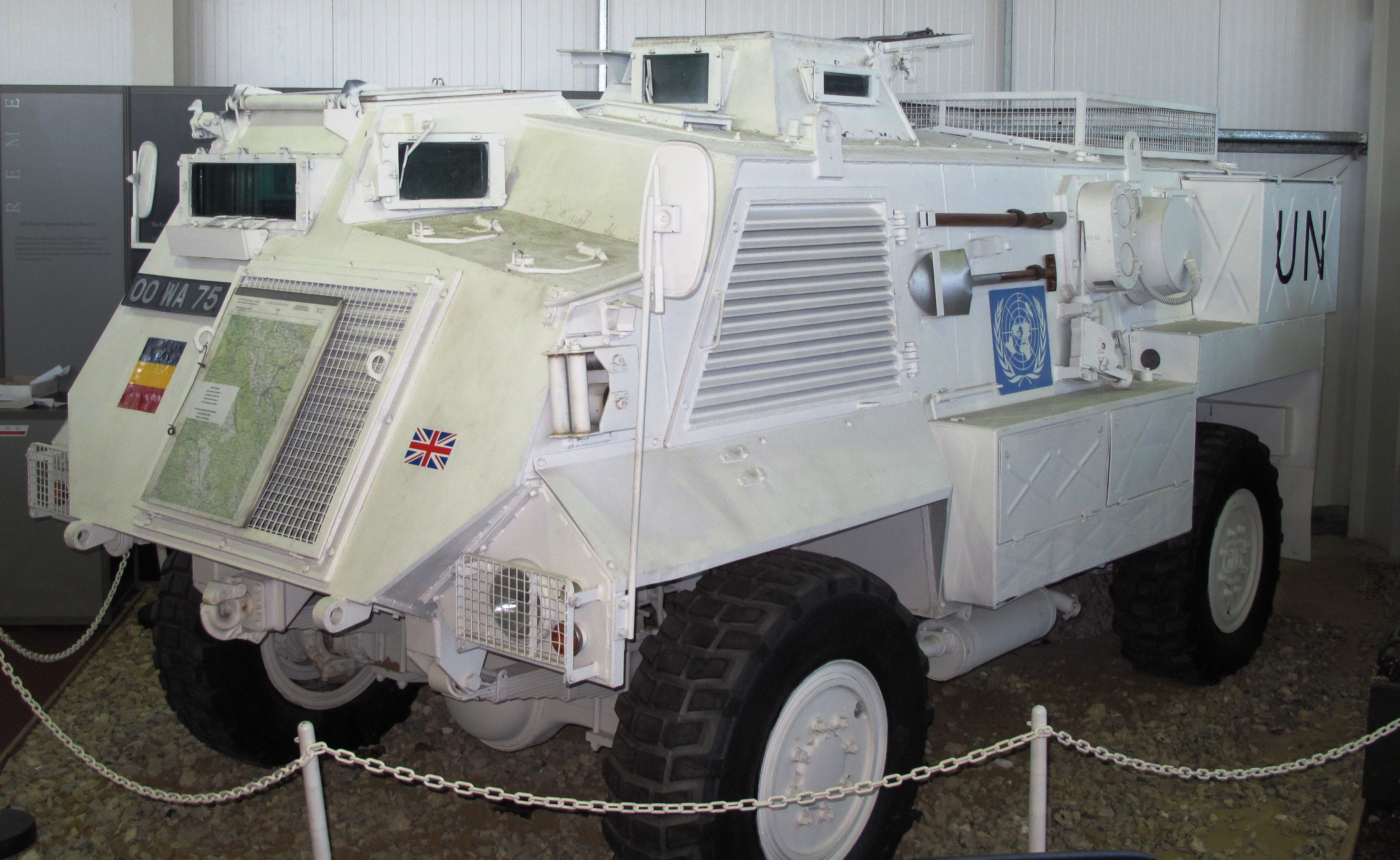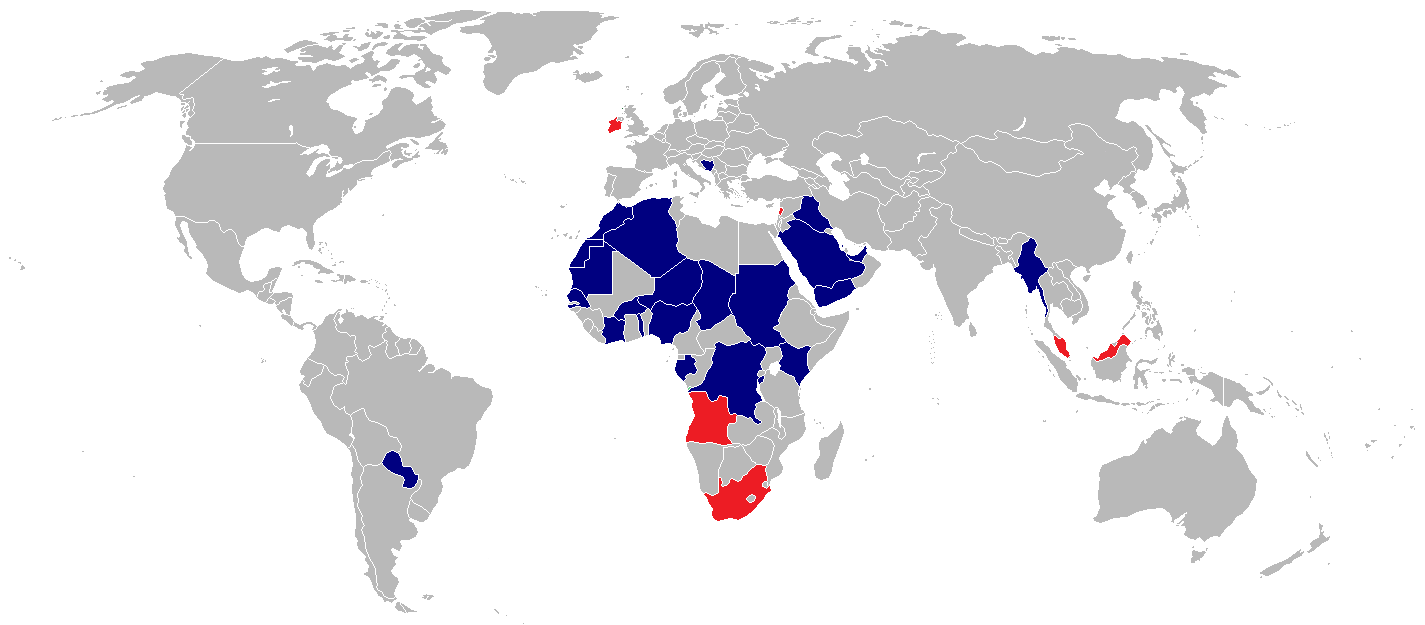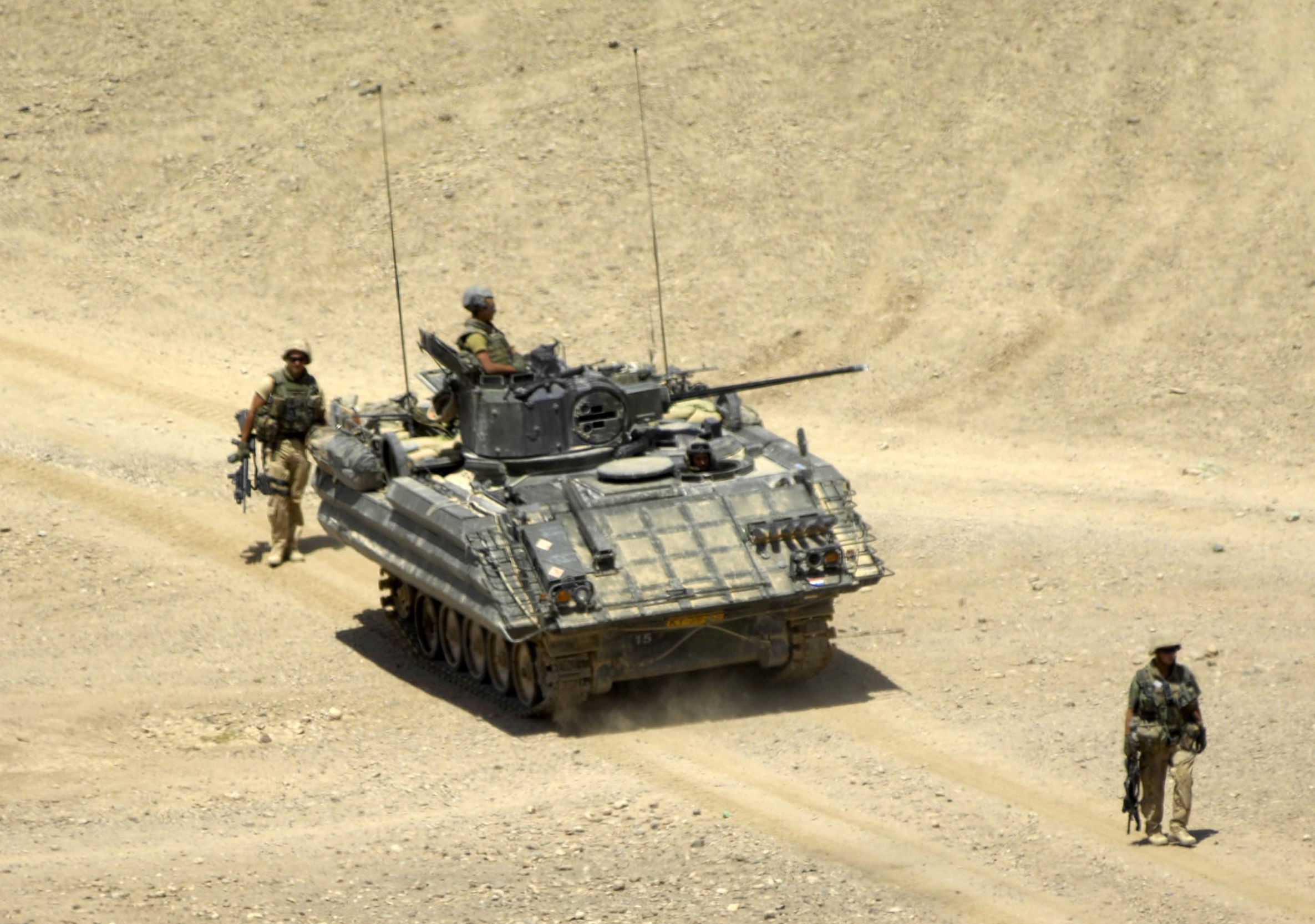|
Royal Bahraini Army
Royal Bahraini Army is the ground force component of the Bahrain Defence Force. The army's current strength is 15,000 personnel and headed by Lieutenant General Khalifa bin Abdullah Al-Khalifa. History Bahraini ground troops took part in the Saudi Arabian-led intervention in Yemen in the Yemeni civil war. In September 2015, five Bahraini soldiers guarding Yemeni–Saudi Arabian border were killed in unspecified circumstances. Another three died in Yemen afterwards. Formation The army consists of 3 brigades and 2 battalions: * 1 Armoured Brigade ** 2 armoured battalions ** 1 recon battalion * 1 Mechanized Infantry Brigade ** 2 mechanized infantry battalions ** 1 infantry battalion * 1 Artillery Brigade ** 6 artillery batteries * 1 air defence battalion * 1 special forces battalion Equipment RBA has a mix of equipment purchases in the 1970s and early 1990s. They are currently modernizing some of the army's equipment. Most purchases in the past have been second hand from the Unit ... [...More Info...] [...Related Items...] OR: [Wikipedia] [Google] [Baidu] |
Emblem Of Bahrain
The current coat of arms of Bahrain is a coat of arms that was originally designed in 1932 by Charles Belgrave, the British adviser to the then- Shaikh of Bahrain. The design has undergone slight modifications since then, namely in 1971 in 2002 when mantling and the indentations of the chief were modified respectively, but the influence of the original design is still clearly visible in the modern blazon. And the recent modification happened in 2022 when King Hamad Al-Khalifa issued a decree-law amending the royal crown to be added to the national emblem of Bahrain. The arms act as a governmental and national symbol in addition to being the personal arms of the king; only the king, however, may display the royal crown ensigning the coat of arms. History The General Maritime Treaty of 1820 gave Bahrain protected status (not as a protectorate of the United Kingdom). In 1932, the advisor to the Ruler, Charles Belgrave, designed a coat of arms for the Ruler, Isa ibn Ali Al Khalifa. T ... [...More Info...] [...Related Items...] OR: [Wikipedia] [Google] [Baidu] |
M60 Patton
The M60 is an American second-generation main battle tank (MBT). It was officially standardized as the Tank, Combat, Full Tracked: 105-mm Gun, M60 in March 1959. Although developed from the M48 Patton, the M60 tank series was never officially christened as a Patton tank. The US Army considered it a "product-improved descendant" of the Patton tank's design. The design similarities are evident comparing the original version of the M60 and the M48A2. It has been sometimes informally grouped as a member of the Patton tank family. The United States fully committed to the MBT doctrine in 1963, when the Marine Corps retired the last ( M103) heavy tank battalion. The M60 tank series became America's primary main battle tank during the Cold War, reaching a production total of 15,000 M60s. Hull production ended in 1983, but 5,400 older models were converted to the M60A3 variant ending in 1990. The M60 reached operational capability upon fielding to US Army European units beginning in Dec ... [...More Info...] [...Related Items...] OR: [Wikipedia] [Google] [Baidu] |
Saxon (vehicle)
The Saxon is an armoured personnel carrier used by the British Army and supplied in small numbers to various overseas organisations. It was developed by GKN Sankey from earlier projects, AT 100 IS and AT104, and was due to be replaced by the Future Rapid Effect System. History The first operational Saxons were deployed in Germany in 1983, to equip mechanised infantry battalions. The Saxon has now been withdrawn from service in HM Armed Forces, but 147 are kept in storage. The Saxon has been deployed to places such as Bahrain, Brunei, Bosnia, Malaysia, Oman, Iraq and Afghanistan. Seven Saxons were ordered by the Royal Hong Kong Police from GKN Sankey in 1987 and delivered in 1988 where they replaced 15 Saracens. They were assigned to the Police Tactical Unit and remained there until withdrawn in 2009. In the Balkans, Saxons were outfitted with turrets taken from FV432s to serve as improvised anti-sniper turret. 75 Saxons were sold to Ukraine reportedly under a contract mad ... [...More Info...] [...Related Items...] OR: [Wikipedia] [Google] [Baidu] |
Saxon Armoured Vehicle MOD 45143139
The Saxons ( la, Saxones, german: Sachsen, ang, Seaxan, osx, Sahson, nds, Sassen, nl, Saksen) were a group of Germanic * * * * peoples whose name was given in the early Middle Ages to a large country (Old Saxony, la, Saxonia) near the North Sea coast of northern Germania, in what is now Germany. In the late Roman Empire, the name was used to refer to Germanic coastal raiders, and as a name similar to the later "Viking". Their origins are believed to be in or near the German North Sea coast where they appear later, in Carolingian times. In Merovingian times, continental Saxons had been associated with the activity and settlements on the coast of what later became Normandy. Their precise origins are uncertain, and they are sometimes described as fighting inland, coming into conflict with the Franks and Thuringians. There is possibly a single classical reference to a smaller homeland of an early Saxon tribe, but its interpretation is disputed. According to this proposal, the S ... [...More Info...] [...Related Items...] OR: [Wikipedia] [Google] [Baidu] |
Panhard M3
The Panhard M3 VTT ( French: ''Véhicule de Transport de Troupes'') is an amphibious armoured personnel carrier. Developed as a private venture for the export market, the M3 was built with the same mechanical and chassis components as the Panhard AML range of light armoured cars.Ogorkiewicz, R. M. ''AFV Weapons Profile 039 Panhard Armoured Cars'' (Windsor, Berks: Profile Publications). The two vehicle types share a 95% interchangeability of automotive parts. The M3 is an extremely versatile design which can be configured for a wide variety of auxiliary battlefield roles. The most popular variants of the base personnel carrier included an armoured ambulance, a mobile command post, and an internal security vehicle. It could also be fitted with a wide variety of turrets and armament, ranging from a single general-purpose machine gun to medium calibre autocannon. The M3's relatively light weight and the location of its air and exhaust outlets on the hull roof made it possible to desi ... [...More Info...] [...Related Items...] OR: [Wikipedia] [Google] [Baidu] |
Lynx Reconnaissance Vehicle
The Lynx reconnaissance vehicle (manufacturer's name: ''M113½ Command and Reconnaissance Vehicle'', abbr. ''M113 C&R'') is a United States-built tracked reconnaissance armoured fighting vehicle, which was employed by the armed forces of the Netherlands and Canada. Dutch vehicles were exported in the 1990s to Bahrain and Chile, according to SIPRI 150 and 8 vehicles respectively. The M113½ was developed in 1963 as a private venture by FMC Corp., the manufacturer of the M113. It competed with the M114 but the US Army chose the M114 for production. The design was then offered to foreign buyers and gained the name Lynx when purchased by Canada. The Lynx was based on the M113, including its aluminum armor and many details of its construction. However, it is shorter in both length and height, and has four road wheels instead of five. This reduction in size led to a significant reduction in weight as well, dropping to about 8 tonne compared to over 12 for the original M113. Th ... [...More Info...] [...Related Items...] OR: [Wikipedia] [Google] [Baidu] |
Armoured Personnel Carrier
An armoured personnel carrier (APC) is a broad type of armoured military vehicle designed to transport personnel and equipment in combat zones. Since World War I, APCs have become a very common piece of military equipment around the world. According to the definition in the Treaty on Conventional Armed Forces in Europe, an APC is "an armoured combat vehicle which is designed and equipped to transport a combat infantry squad and which, as a rule, is armed with an integral or organic weapon of less than 20 millimetres calibre." Compared to infantry fighting vehicles (IFVs), which are also used to carry infantry into battle, APCs have less armament and are not designed to provide direct fire support in battle. Infantry units which travel in APCs are known as mechanized infantry. Some militaries also make a distinction between infantry units which use APCs and infantry units which use IFVs, with the latter being known as armoured infantry in such militaries. History The genesis o ... [...More Info...] [...Related Items...] OR: [Wikipedia] [Google] [Baidu] |
AIFV
The AIFV (''Armored Infantry Fighting Vehicle'') is a US tracked light armored vehicle that serves as an infantry fighting vehicle (IFV) in the armies of several countries. It is a development of the M113A1 armored personnel carrier. History In 1967, funded by the US Army, the FMC corporation produced two prototype vehicles designated as XM765 - these were based on their experiences with the earlier XM701 vehicle, developed for the MICV-65 program. The XM765 was based on the M113A1, upgraded with an enclosed turret and firing ports, so that the infantry could fight from within the vehicle. The army evaluated the vehicle, but decided that they wanted a better protected and more mobile vehicle, selecting instead the M2 Bradley. FMC continued development as a private venture, resulting in the product improved (PI) M113A1 in 1970. The PI M113A1 had the driver and engine at the front, with an enclosed weapon station in the center of the hull and the commander seated at the rear. ... [...More Info...] [...Related Items...] OR: [Wikipedia] [Google] [Baidu] |






